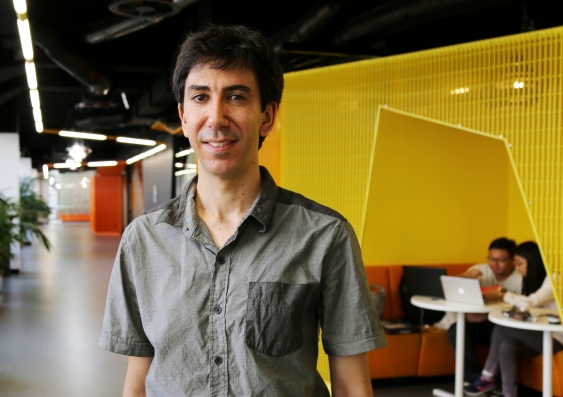Teaching the way to the top
As it looks to the next decade, UNSW will pursue excellence in research while also rewarding inspiring teachers.
As it looks to the next decade, UNSW will pursue excellence in research while also rewarding inspiring teachers.

Is it possible to be a top-quality research-intensive university in the top 50 in the world and also teach a very large number of diverse and outstanding students?
Professor Ian Jacobs, UNSW’s President and Vice-Chancellor, is convinced it is. Releasing the University’s 2025 Strategy, he unveiled an education model that rejects the conventional wisdom that says if you are to excel at research, you must relegate teaching to second place.
“UNSW is possibly the first university in the world to declare itself both research and teaching intensive,” Professor Jacobs says. “We are among a limited group of universities worldwide capable of delivering research excellence alongside the highest-quality education on a large scale.”
A flagship of the UNSW 2025 vision is the design, development and implementation of the new Scientia Educational Experience that will offer academics and students more flexible and personalised pathways aligned with their skills, circumstances and aspirations.
For students it means many more choices within a three-semester structure, the seamless integration of on-campus and digital learning, the benefits of a global perspective and a keen awareness of the role universities can play in promoting social justice and giving back to communities.
I don’t think that many universities in the world have really valued teachers.
For academics it means the opportunity to pursue a “teaching only” career pathway for the first time and to be properly recognised and rewarded for doing so.
Professor Jacobs says UNSW will “recognise, reward and promote teachers in a way that has never happened before”.
“I don’t think that many universities in the world have really valued teachers,” he says. “In the past it hasn’t often been possible to become a top level professor by doing day in, day out inspiring teaching that changes the lives of people and influences their careers. I think that’s wrong.”
A recent UNSW-commissioned report by Deloitte Access Economics found the skills and additional productivity universities contribute to the Australian economy, largely through teaching and producing talented graduates, was worth $140 billion in 2014. “This is a very large sum of money ... and the benefits are not just economic, they are social as well,” Professor Jacobs says.
The transformation in the way UNSW students learn, and teachers teach, is already well underway and the results are being constantly and rigorously assessed so that lessons learned today are fed back into learning models to drive future innovation.
“As both an early adopter of the educational technology, and an inventor of e-learning systems ourselves, UNSW is well placed to understand the unprecedented opportunities quality educational technologies offer,” Professor Jacobs says.
Professor Bob Fox, Deputy Director of UNSW’s Learning and Teaching Unit, says one of the greatest benefits of educational technology is to enable great teachers to make the most productive use of face-to-face time with students.
As both an early adopter of the educational technology, and an inventor of e-learning systems ourselves, UNSW is well placed to understand the unprecedented opportunities quality educational technologies offer.
A recent Learning and Teaching forum at UNSW – Blended Learning: Past, Present and Future – was told, for example, that all first-year chemistry students now use online, interactive “Lecture Prep” units that take them through the assumed knowledge they need ahead of each class.
This “flipped classroom” approach has so effectively engaged students – 95% participate every week without prompting – and improved student outcomes that it will be emulated across the School of Chemistry.
Likewise, in accounting subjects, an online flipped classroom delivers key content ahead of classes so valuable face-to-face time can be dedicated to enriching discussions and activities, rather than the mere delivery of course content.
Another outstanding UNSW innovation is a cloud-based virtual PV solar cell factory that allows students to learn how to manufacture batches of silicon solar cells by progressing through levels of attainment, much like a computer game.
Since its inception in mid-2014, and its public launch in early 2015, thousands of people from 85 countries have made more than 600,000 virtual solar cells. UNSW students also improved their performances on an assessment by an average of 6% after working with the virtual factory.
Meanwhile, a free UNSW Massive Open Online Course in systems engineering, which would previously have been restricted to 25 students a class, recently attracted more than 20,000 students worldwide.
“What we are seeing at UNSW is an increasing number of recognised quality innovations ... into the future we will have even more variety in the way people learn and where they learn,” Professor Fox says. “At the heart of education is a high-quality curriculum but technology is enabling us to deliver it in many more ways.”